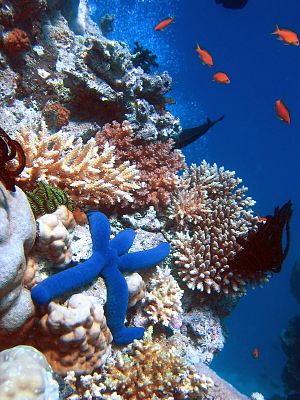Lawsuit aims to stop US government funding Curtis Island developments which could ‘destroy this wonderful place’
American environmental groups have escalated a lawsuit against the US government which aims to prevent it funding two “deadly” gas facilities beside the Great Barrier Reef.
The three groups have filed a challenge to the funding of a second facility, which is being backed by the US Export-Import Bank, to add to an original lawsuit that was launched in December last year.
The NGOs – the Centre for Biological Diversity, the Turtle Island Restoration Network and Pacific Environment – initially sued the Export-Import Bank, which is a US government agency, over its $3bn loan for the Australia Pacific LNG project.
The lawsuit has now been expanded to challenge $1.8bn invested by the US bank in the Queensland Curtis LNG project.
Both developments, which have received environmental approval in Australia, are located on Curtis Island. Another LNG plant on the island has been approved, while a fourth, the Arrow project, recently got the go-ahead from the Queensland government.
Opponents of these projects say that dredging nearby Gladstone harbour, to allow ships to export gas, has caused huge damage to marine ecosystems, including sea turtles, dugongs and dolphins.
Sarah Uhlemann, international program director at the Centre for Biological Diversity, told Guardian Australia from Seattle that US taxpayers should not be paying for the destruction of the Great Barrier Reef.
“I don’t think these projects would have been allowed in the US, as they would have violated the Endangered Species Act,” she said. “This act prohibits harm to US endangered species, which include the sea turtles and dugongs.
“A US agency spending US taxpayer money should comply with US laws, wherever they operate. People in the US are very familiar with the Great Barrier Reef, so this case is a great way to show people how this agency is helping destroy this wonderful place [by] funding carbon intensive projects despite the known impacts of climate change.”
The Turtle Island Restoration Network, one of the conservation groups behind the lawsuit, said it was particularly concerned about the impact on sea turtles of water pollution and boat strikes from increased shipping.
“When I flew over Curtis Island recently I was shocked to see the devastation of the marine habitat and sediment plumes discoloring the coastal waters for miles,” said Teri Shore, program director for the network.
Felicity Wishart, campaign director at the Australian Marine Conservation Society, which is providing non-financial support to the lawsuit, told Guardian Australia the case could set a legal precedent.
“There are a number of other developments this bank is looking to invest in, so it’s important to set a precedent,” she said. “It’s disappointing that the US, which has prided itself on good environmental laws in the past, is involved in this. But it’s also disappointing that our own government’s legislation isn’t strong enough to stop these projects.
“It would be nice if they could go ahead without them threatening the reef and wildlife, but unfortunately the weight of evidence shows this isn’t the case. In Australia, we seem to be happy to approve things and then think of the environment afterwards.”
Related articles








